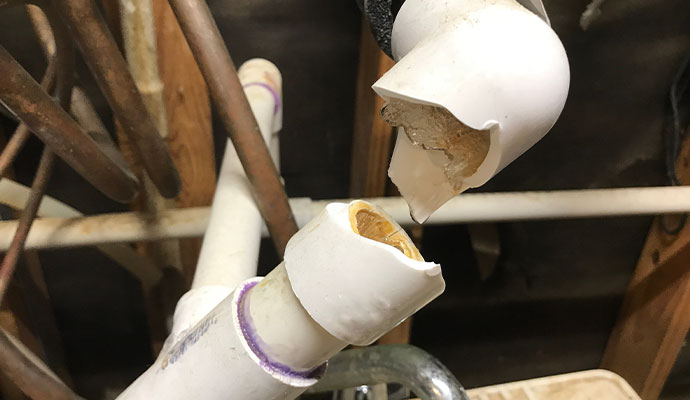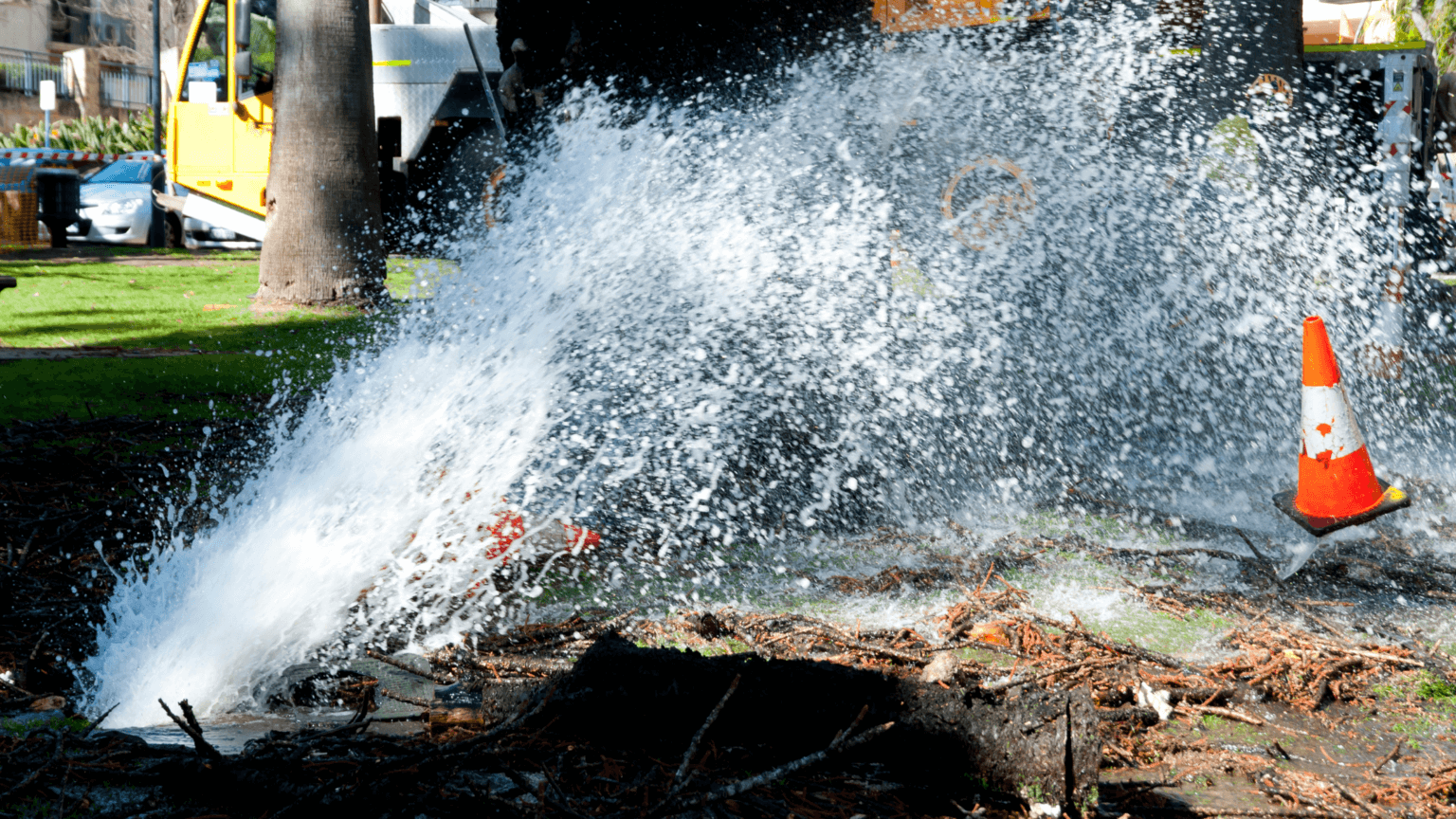How to Handle a Burst Pipe
How to Handle a Burst Pipe
Blog Article
We have discovered this great article involving 6 Basic Steps to Stop a Burst Pipe from Getting Out of Control below on the web and reckoned it made good sense to write about it with you over here.

The prompt response when a pipe bursts in your residential or commercial property is to go in full panic setting. Do not stress; you are not alone as many property owners feel this way, as well. Besides, this problem can result in significant residence damages.
Though it might be hard to do, remain calm and collected. Making hasty decisions can make the scenario worse. To help you out, here are six immediate steps you need to take when encountering ruptured pipes. Bear in mind, expertise is power so researching this prior to it takes place will permit you to stay in control also in the middle of an enormous emergency water leakage:
Conduct a Quick Visual Evaluation
Though your instinct is to shut off the valve today, pause for some time and also carry out a fast aesthetic inspection of the site. Try and identify where the water is leaking from. Doing so will certainly allow you to advise the plumber on what location to check out. This less-than-a-minute examination will certainly save you time and also aid your plumber rapidly identify the origin.
Close the Key Water Valve
After a fast check, you can now turn off the major water. Keeping water running will certainly cause large damage. The last thing you require is significant flooding warps wooden floors or damages home appliances and also furnishings. You also intend to stay clear of mold development. Turn off the valve and also call the plumber for an emergency examination.
Drain the Pipe
As you wait on the plumber to arrive, drain the water moving in the pipes. Simply run your tap and purge the toilet to make sure that whatever water is remaining will entirely drain. When you do this, the leakage will quit going where it's not meant to be to begin with. With that, the plumber can likewise function faster. Simply do not forget to shut down the faucet after the pipelines are drained.
Try a Do It Yourself Pipe Fixing
If you've obtained handyman skills, do a small repair like sealing a tiny split. You can buy piping sealer to make quick fixes. Beware with the application, so you don't get worse any kind of problems. If you require to tighten a few nuts and screws, stand up to need to over-tighten as this can result in leaks down the line.
Eliminate Any Standing Water
Don't allow any kind of standing water sit for as well. It will result in more damage if water seeps into your floors or rug. You likewise do not want it to stream into vital items like electronics. Tidy up the water and also dry the area off quickly. If you have electrical fans, keep them going to circulate the air and also promote quicker drying.
Call a Trustworthy Plumber
If you feel unclear concerning your abilities to fix a small fracture or small leakage, it is best to call a professional plumber. When it comes to repair work, they have the knowledge, abilities, tools, as well as experience to get things done quickly. Tinkering with pipes is not a joke as it can lead to more complications if done incorrectly. Finding a credible plumbing service assures your water leakage is dealt with effectively and efficiently.
A Frozen Pipe Has Burst, What Are The Next Steps?
How to Tell if Pipes are Frozen
It’s important to catch frozen pipes early to prevent damages. Typically, you will be able to boost your thermostat or talk a professional plumber before any damage occurs. However, here are a few signs that will help you identify if your pipe is frozen.
No Water – An obvious sign that you have frozen pipes is if there’s a complete lack of water coming from your faucets or fixtures. Frost – If you can gain access to view your pipes, check to see if there is visible frost on them. Take note of which parts of the pipe has frost. Smell – If your pipes freezes, it will block food and waste down your drain, causing a backup and your room to begin to have a bad smell. How to Tell if a Frozen Pipe has Burst
Inspect the Inside of the Building. Go through each area of the building and look for actively dripping water and signs of water damage. Examine any exposed pipes and check them for frost or condensation. Especially keep an eye on rooms such as bathrooms, kitchens, laundry rooms, and unheated areas of the building. Turn on the faucets and flush your toilets. Ensure they are working and the water has no discoloration or smell to it. If there is only a slow trickle of water coming out, or no water at all, this might mean a frozen pipe has burst. Check your water meter. If all fixtures in the building are off and it still shows movement, this could be a sign of a burst. Check the exterior of the building. Look for water building up anywhere out of the ordinary, or sinkholes in your yard. Remove Water Right Away
It is important to clean up water right away to prevent mildew and mold buildup. You will need towels, buckets, mops, and a wet/dry vacuum. Do not wait for the plumber to remove the water for you, the longer you wait the more likely it is that you’ll get mold or severe water damage.
Avoid Extreme Temperatures
First off, make sure the temperature in your home is no lower than 55*F. If you are going to be gone for a long time, turn off your water with the shut off valve to prevent freezing and bursting.
Don’t Leave Still Water in Pipes
When the weather gets too cold, you should let water drip from your faucet. While the dripping might be irritating, this will help prevent water from freezing. You can detect a frozen pipe if the faucet stops working, or the toilet doesn’t refill.
Taking Precautions with Frozen Pipe Damage
A burst pipe is one of the most common issues people face at home. There can be a number of reasons why pipes burst in harsh climate conditions such as extremely cold temperatures. Low to freezing temperatures can freeze the pipes, causing there to be frozen pipe damage and leading them to burst. Regardless of the type of pipes – whether they be metal or plastic, they can still expand or burst and cause water damage to your home. A burst pipe also requires a significant amount of costs in repairs. This is why it’s important to take all the safety measures to prevent pipes from bursting.
Below are some frequently asked questions and helpful steps to take to safely solve any problems you may be experiencing with your pipes at home.
What to Do When a Pipe Bursts:
Turn off the main water supply Contact a professional Quickly remove and clean excess water to avoid further water damage. Take pressure off pipes by draining the faucets Circulate warm air in your home to slowly thaw pipes Use a repair sleeve to temporarily cover the damaged area of the pipe https://jenkinsrestorations.com/frozen-pipe-has-burst-whats-next/

Do you really like reading about 6 Basic Steps to Stop a Burst Pipe from Getting Out of Control? Give a comment down the page. We'd be glad to hear your feelings about this post. In hopes to see you back again in the near future. Those who enjoyed reading our page kindly remember to pass it around. We truly appreciate reading our article about 6 Basic Steps to Stop a Burst Pipe from Getting Out of Control.
Plumbing challenges? Get immediate solutions. Report this page